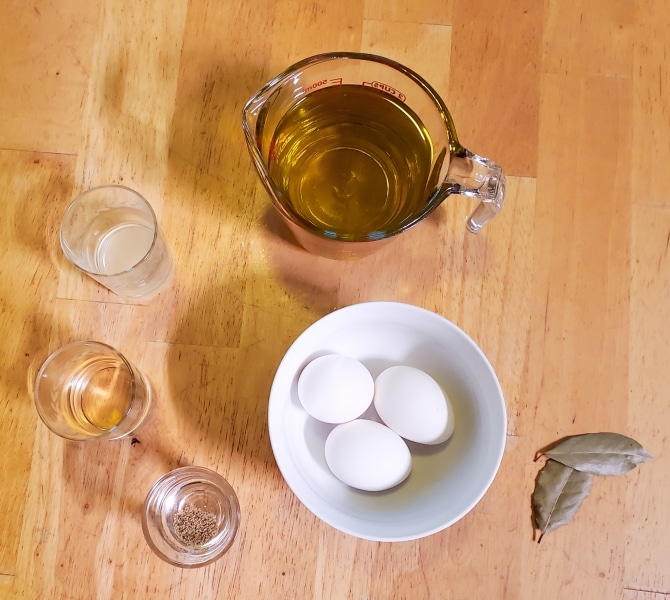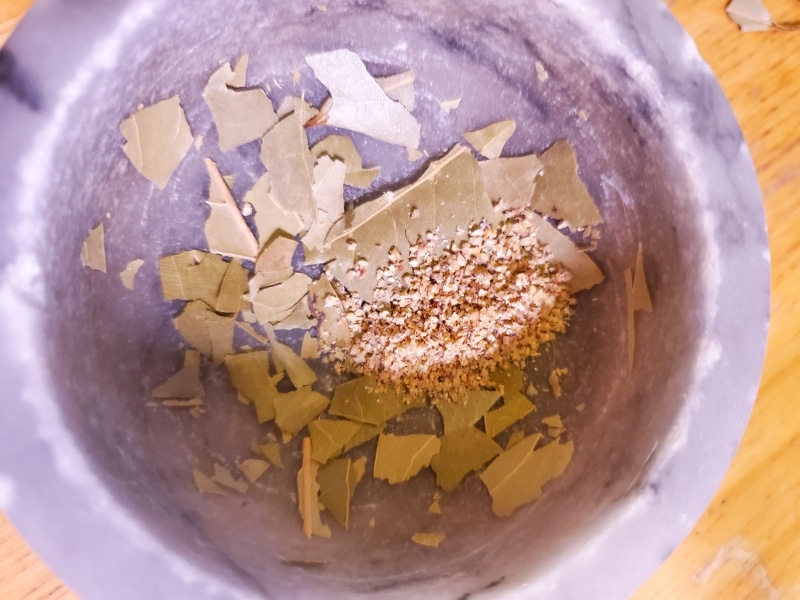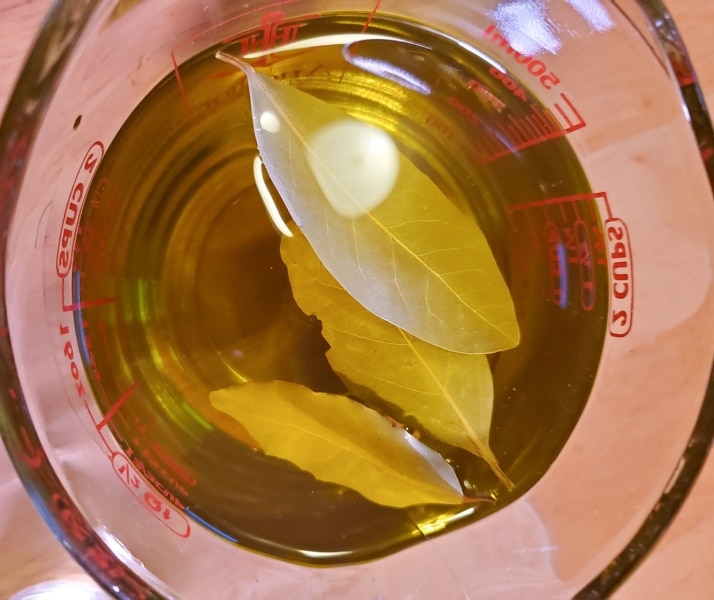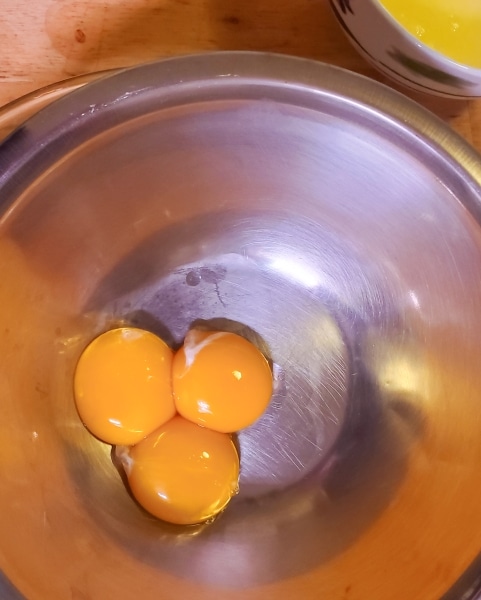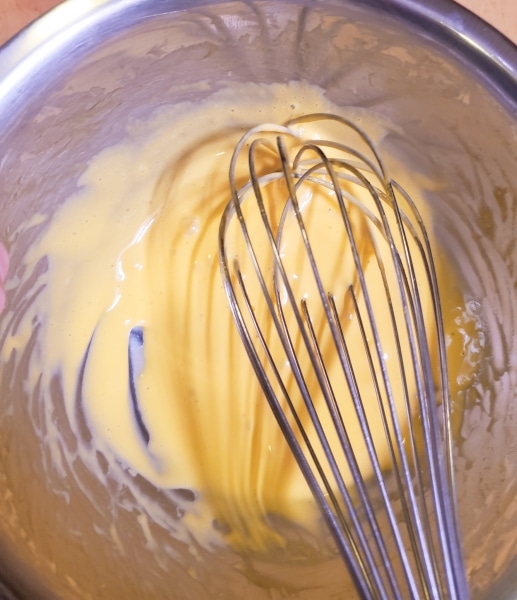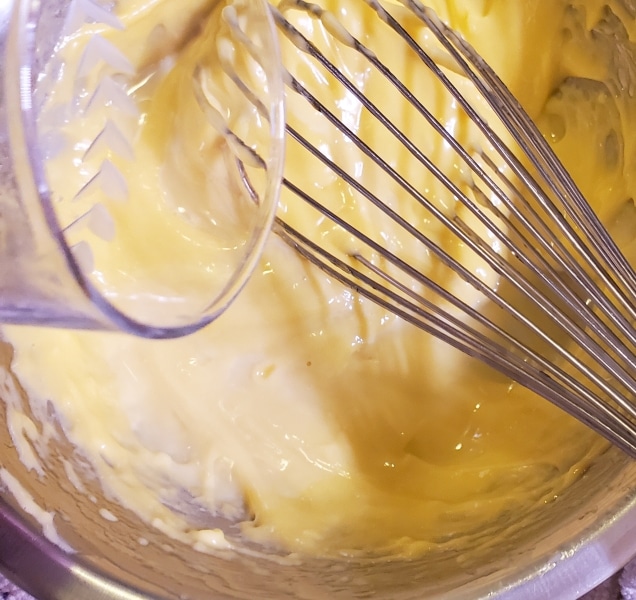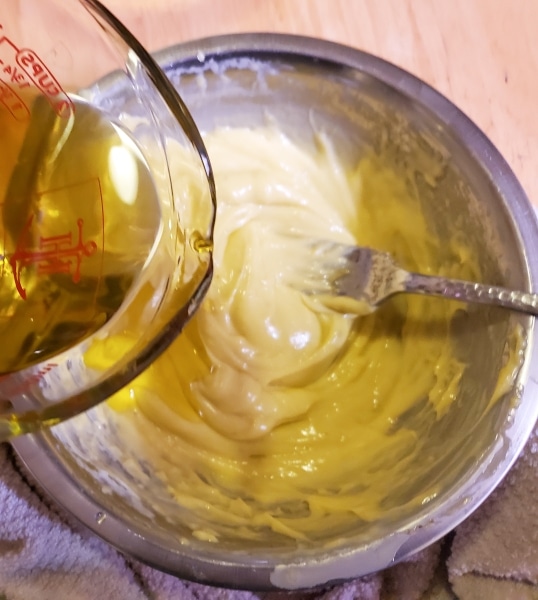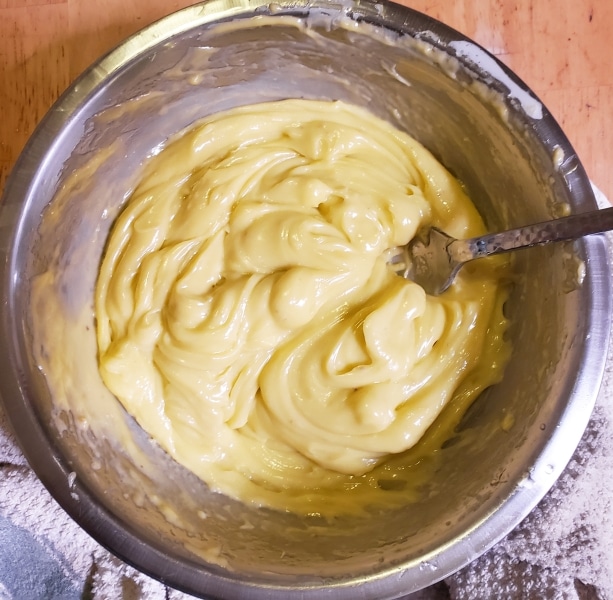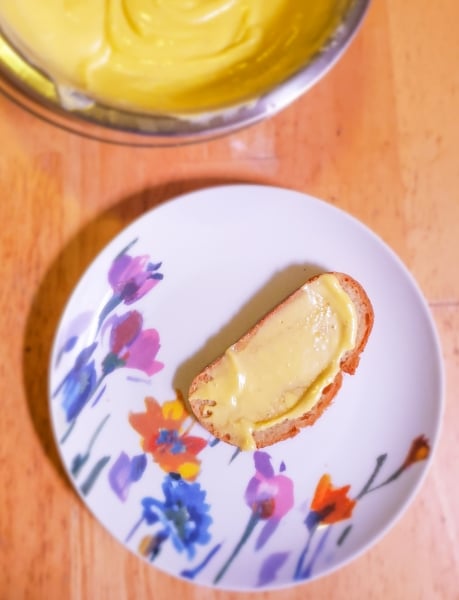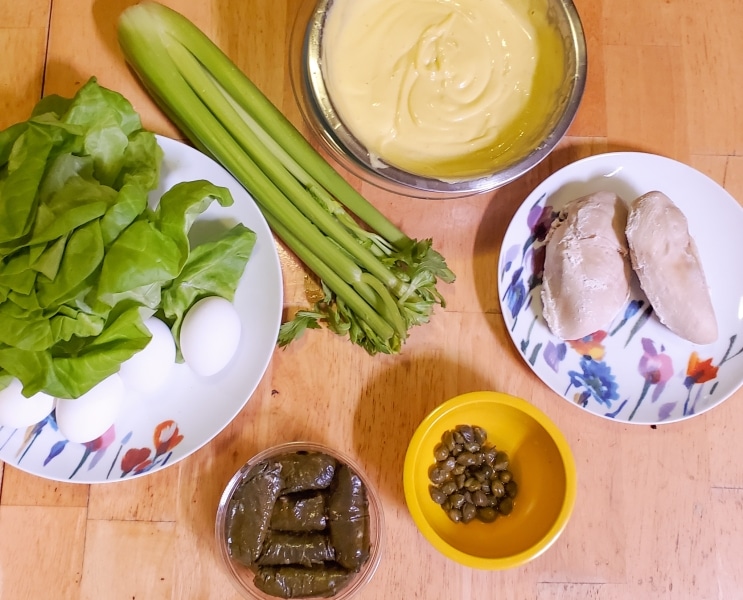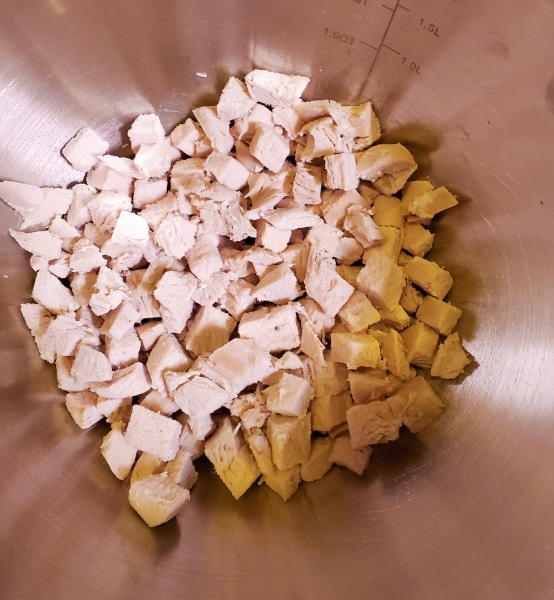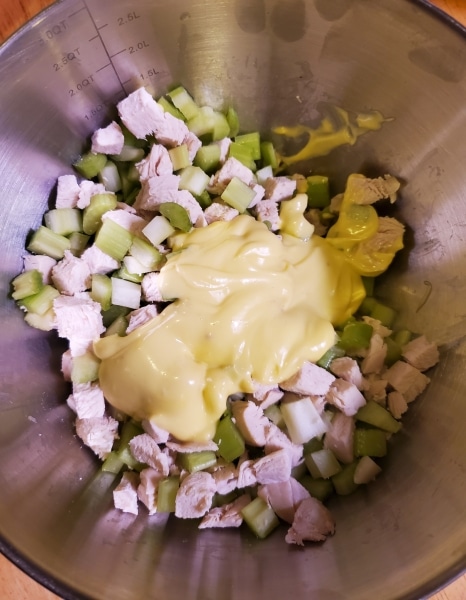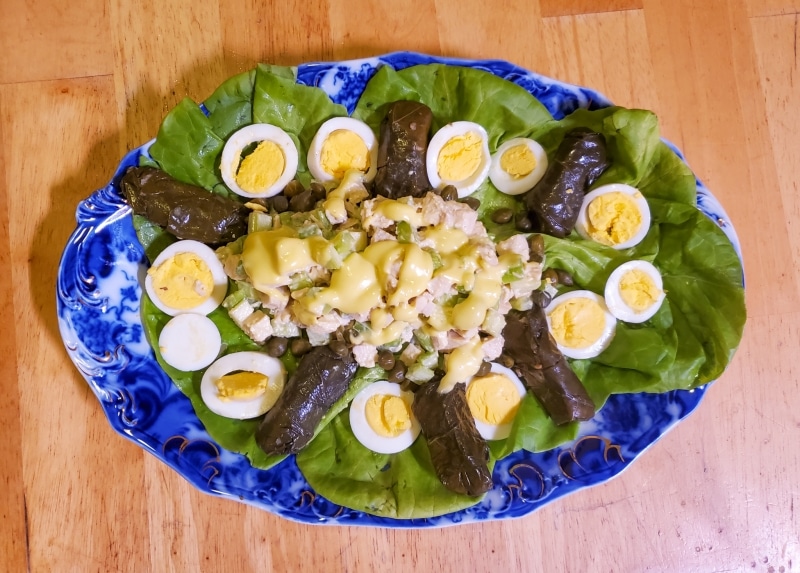Chicken Salad with Homemade Mayonnaise
Katie Maxwell, Visitor Services Coordinator
This spring, food historian Dr. William Woys Weaver and I will run the food-centered seminar, Philadelphia at the Table: Treasures of the Larder Invaded.
During the course of our research, I noticed that chicken salad appeared frequently in 19th-century menus, and I wondered if it would resemble modern chicken salad. Fortunately, the Library Company has this primary source: Chef J.W. Parkinson’s The Caterer and household magazine (1887 edition). Two of the menus I have been studying are even credited to Parkinson’s restaurants.
Here is a recipe for chicken salad from page 11 of The Caterer:
From a cold boiled fowl remove the skin and fat, and cut the breast meat into dice; it should be neither chopped nor pulled, as is often directed, but cut by hand with a sharp knife…
Cut likewise an equal bulk of the tender, crisp inner stalks of celery, (reserving the stringy, outer stalks for making cups or sauces) and mix with the chicken.
Then take as much of the sauce selected [mayonnaise], whether French, American, or other, as may be needful to give a good coating to the chicken and celery and toss it lightly together with a boxwood fork.
Next cover the bottom of an oval china platter with the white central leaves of well blanched lettuce, and lay the lighter colored green leaves like a fringe, interspersed with sprigs of endive, around the border, place the salad upon it in the form of a thin segment of water melon or rounded oval, and pour over it a sufficiency of the sauce to cover it well. Smooth it neatly with a knife, and garnish with stuffed olives laid around the edge, next them a row of thin slices of hard boiled eggs, and lastly a few capers, which have been dried in a soft towel, arranged either in festoons, or as a cipher monogram, or any word of good cheer or welcome appropriate to the occasion.
I see I need to make the mayonnaise first. Fortunately Parkinson provided several options in the preceding pages. Today I will go with French Mayonnaise (page 9) where a list of ingredients is helpfully provided:
1 pint olive oil,
1 pinch white pepper,
2 tablespoonfuls vinegar,*
3 yolks of eggs,
1 pinch powdered bay leaves,
1 tablespoonful lemon juice.
*I am using white wine vinegar since this is what Parkinson recommends on pages 9 and 10:
Very good and well flavored vinegar is made from cider, but it is not at all equal for our present purpose to French white wine vinegar…
Right off the bat, I have a slight problem. I couldn’t find any powdered bay leaves, although I do have whole bay leaves. I tried to achieve a powdered consistency by grinding them with my mortar and pestle, along with the white pepper for abrasiveness.
Well, this is what happened.
Most unhelpful.
Next, I attempt to steep a few bay leaves in the olive oil. This makes the olive oil smell just barely of bay leaves, so that will just have to do.
Now that I have my ingredients figured out I can start the actual recipe:
The eggs must be freshly laid, and every drop of the white carefully separated from the yolks, which put into a soup plate or shallow bowl set on a larger dish containing broken ice;
I’m not sure how fresh “freshly laid” eggs are meant to be, but I bought my eggs from the grocery store yesterday. (Try as he might, my husband cannot talk me into raising chickens together.)
add the spices and stir steadily round in one direction, until the paste is entirely smooth and ceases to thicken, using a boxwood fork for the purpose.
I don’t have a box fork, but a whisk works well.
Then add, very slowly, in a fine stream, half a pint of oil,
I wrapped a dish towel around the bowl to keep it still.
then the lemon juice,
another half pint of oil,
As you can see, the sauce has become much thicker.
and lastly the vinegar, stirring steadily and briskly in one direction, during the entire process, until the sauce thickens no longer.
I think this is officially mayonnaise now. I’m going to give it a taste.
It tastes like mayonnaise but better–fresh tasting and tart. Store-bought mayonnaise sometimes tastes a little sweet to me. I might make it again, but not this much. I have no idea how I will eat it all.
(I should probably add that the Library Company of Philadelphia does not endorse the consumption of raw eggs.)
Now that the mayonnaise is ready, I can start making chicken salad with the following ingredients:
From a cold boiled fowl…breast meat
tender crisp inner stalks of celery
sauce [mayonnaise]…whether French, American or other
well-blanched lettuce*
sprigs of endive**
stuffed olives***
hard boiled eggs
a few capers
*My butter lettuce is already pretty tender, and I’m worried it might not hold up to blanching, so I will just use it raw.
**I couldn’t find any endive this week
***I don’t like olives, and since these are only really here to be decorative, I’ve substituted them with stuffed grape leaves rather than wasting what I assume are perfectly good olives.
From a cold boiled fowl remove the skin and fat,
I was feeling lazy, so I just poached two boneless, skinless chicken breasts.
And cut the breast meat into dice ; it should be neither chopped nor pulled, as is often directed, but cut by hand with a sharp knife.
Parkinson clearly felt strongly about this, though I’m not sure why. I always shred chicken for my chicken salad, and that method has always worked for me. The diced chicken breasts measure about two cups.
Cut likewise an equal bulk of the tender, crisp inner stalks of celery, (reserving the stringy, outer stocks for making soups or sauces) and mix with the chicken.
I tried to make the pieces of celery the same size as the pieces of chicken.
Then take as much of the sauce selected, whether French, American, or other as may be needful to give a good coating to the chicken and celery and toss it lightly together with a boxwood fork.
I probably should have measured the mayonnaise. I spooned a few good dollops onto the chicken salad. My question though is: where is the salt?
Next cover the bottom of an oval china platter with the white central leaves of well blanched lettuce, and lay the lighter colored green leaves like a fringe, interspersed with sprigs of endive, around the border, place the salad upon it in the form of a thin segment of water melon or rounded oval, and pour over it a sufficiency of the sauce to cover it well. Smooth it neatly with a knife, and garnish with stuffed olives laid around the edge, next them a row of thin slices of hard boiled eggs, and lastly a few capers, which have been dried in a soft towel, arranged either in festoons, or as a cipher monogram, or any word of good cheer or welcome appropriate to the occasion.
I decided historical chicken salad was as good an excuse as any to break out the good china. I think the stuffed grape leaves look decent here. However, I gave up on creating any sort of intricate design with capers and just ringed them around the chicken salad. I doubt my plating would pass muster in a 19th-century restaurant or fancy dinner party.
It looks…interesting but tastes bland. Mixing the capers into the salad helps along with adding some much needed salt and pepper. I think I’ll be sticking to modern chicken salad. The remainder of the mayonnaise (plus a little hot sauce) however made an excellent dipping sauce for tater tots.


